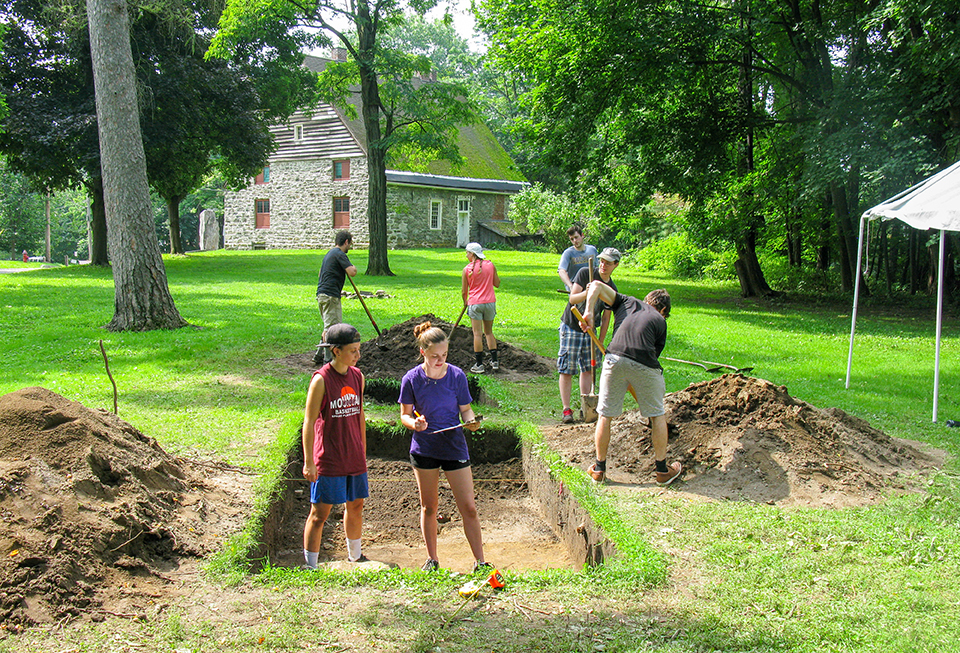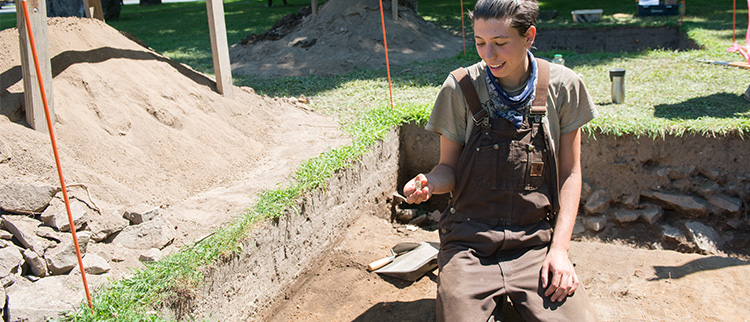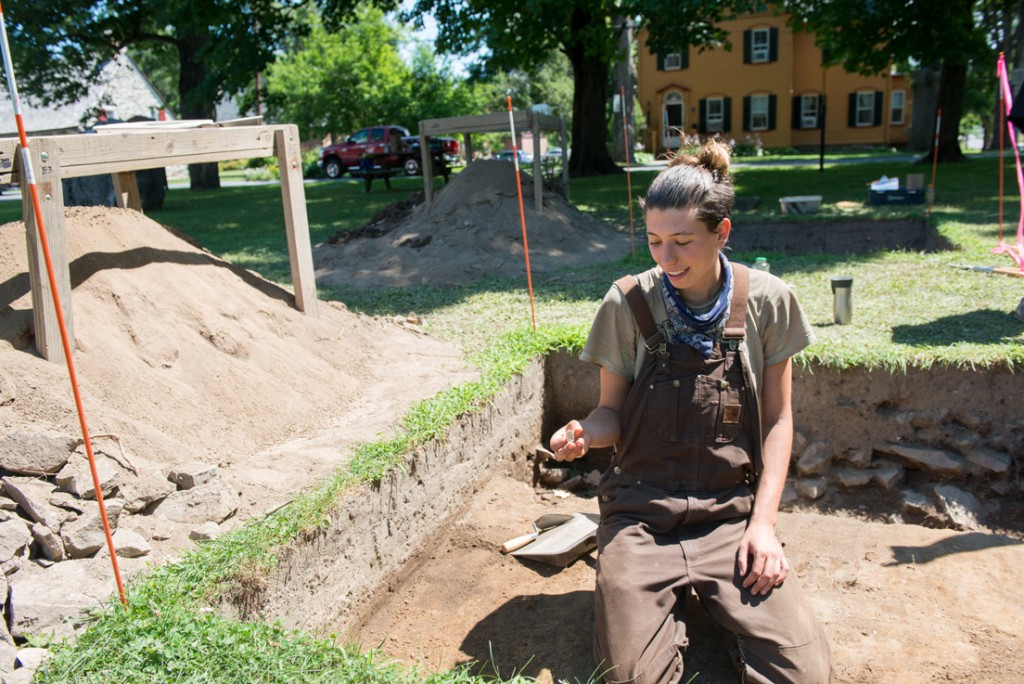In Archaeological Field School, students discover underground history of New Paltz
The SUNY New Paltz Archaeological Field School, under the instruction of Associate Professor of Anthropology Joseph Diamond, has been a summer tradition at New Paltz’s Historic Huguenot Street district for nearly two decades.
On most clear weather days in July, students and community members donning old, dusty clothes, with shovels, brushes and magnifying glasses can be found on sites that afford opportunities to learn more about the European settlers who first came to the area in the 17th century, as well as the American Indian tribes who inhabited the region thousands of years prior to their arrival.
“The most informative way to find out about our ancestors is to investigate the places that they inhabited,” Diamond said. “The artifacts, in conjunction with house patterns, hearths, burials, and midden debris can be analyzed to determine time period, diet, social structure, technology, trade patterns and ultimately, how these elements of prehistoric and historic societies changed over time.”
Diamond, whose archaeological experience dates back more than 40 years, plans his class around lessons in excavation techniques and best practices in classification and analysis. He includes lab sessions that emphasize precision in cleaning, cataloguing and interpreting a day’s findings.
“It’s interesting going from the romantic concept of archaeology to the nitty-gritty, exacting process itself,” said Joe Bacci ’16 (Anthropology).

Many of the class’s man-made findings over the years are identifiable as household items most likely left behind by Huguenot settlers or contemporaneous Lenape tribes such as the Esopus and the Munsee. However, Diamond and his students have found a number of prehistoric pointed spearheads dating back as far as 5000 years, proof that there were people who called New Paltz home long before it bore that name.
Though the search for such a piece may take hours or days, the thrill of discovery motivates these groups of amateur archaeologists to keep working.
“It’s absolutely satisfying to make a find like this,” said Devin King ’15 (Anthropology), shortly after he extracted a shard of incised pottery measuring more than one inch across, which Diamond dated roughly to the early 16th century. “You may dig for a while without finding anything, start to feel your back and your knees hurt, but then you find something and get reinvigorated.”
Diamond has offered the class through New Paltz at Historic Huguenot Street since 1998, working primarily in a field across the street from Dubois Fort. In 2013, he secured permission to dig on the property of the Reformed Church of New Paltz, which itself is part of the history of the district, having been constructed in 1839.
The Archaeological Field School, which is open to all community members, provides a unique experience in practical research to students of anthropology. It also serves as a way for New Paltz residents to have fun learning about the Village’s history. More information is available online.


